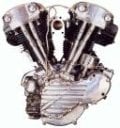recondas wrote:
mia wrote:
I was reading some old posts (2011, 2012) whereas Recondas and Hamei had managed to drive (or did I misread) the V12+DCD to two channels of 1920x2400 (hacking vfo files).
I like to delude myself into thinking it was at least a slightly more elegant than a hack job.

And recondas did all the work. All I did was load the file and connect the cables ...
mia wrote:
... those options are:
* V12+DCD (Fuel or Tezro deskside) and two channels of 1920x2400 for a resulting picture of 3840x2400.
If you've already got this ready in hardware, it's trivial to connect the two cables and load the vfo file.
I would suggest doing this first because it is so easy and it is possible that you won't like the display. For graphic work I think it's great but for text mode, damn, you best have some good eyes !
recondas wrote:
It does work, but with a single V12/DCD you risk the occasional fail-to-sync-without-rerunning-xsetmon issues hamei described (earlier in this thread). If you have two Onyx350/V12 systems they might provide a more stable solution, even if neither has a DCD (though two V12s, two DCDs would be optimal).
Ja, but as a first step it's trivially simple. From a self-serving standpoint, it would be interesting to see if you get the same problem or if that is some glitch in my hardware. And there is no guarantee there won't be the same problem with two dcd's, either. As wreck pointed out, the video format compiler bitches when you feed it a y number larger than 2400. Four stripes of 960 x 2400 is still bigger than 2400 .. oh yeah, you could do four tiles at 1920 x 1200. That would tell us whether the video compiler has the glitch or the dcd's ... go for it

mia wrote:
* g2-brick on an Origin/Onyx/Tezro rackmount.
This would be interesting from the standpoint of
You already have one, they are rare, it would be more compact, you should be able to run the four channels with a single 2U box which would be physically nice. Your description of your work is not-mainly-OpenGL-ish so the alleged weakness of the Infinte Disaster graphics might not be a drawback.
On the other hand, it's a step into the unknown.
mia wrote:
* Onyx 350IR + Tezro rackmount "numalinked" (each having a DCD).
Oh. An O350 plus a Tezro. I thought it was two O350's. Serial number problems

How come my O350 lmhostid starts with a "d", btw ?
I would like to do the four channels because in some applications (mostly Pro/E for me) you can see the lack of color depth. If you didn't have a comparison you'd never notice, and running terminals and text editors I don't imagine you would ever see a difference, but a side-by-side comparison of low-memory and high-memory screens shows that high memory is better. What a surprise

You would also get a slightly higher refresh. (33 to 48 hz step up.) But that's not something you can see with the T221 because it always refreshes the screen at 48hz. And you can't type or move the mouse faster than 33 hz anyhow. The whole "refresh" thing on a T221 is complex to talk about because the screen update is not the same as the "refresh rate." And the mouse is so tiny that you can't move it fast or your eyes will lose it so the benfit of a "fast refresh" is just not there.
Note to those who want to open-source Irix : hardware hacking the V12 to 512 megs of memory would bring the same (or a better) result. Maybe start with a simple project ?
So you don't really need four channels and you don't really need a faster refresh for typing and the panel refreshes at 48 hz anyhow and maybe if you just plug in the two cables and load the vfo you'll be plenty happy and stop right there. And a Fuel is smaller, quieter, and just about as fast as the O350 ... You might consider a 900 mhz Fool with the low-noise fan hacks. No 75 foot cables, repeaters, noise and distance hassles, just stick it under your desk. I bet it would suit your needs admirably.


 (2x)
(2x)












